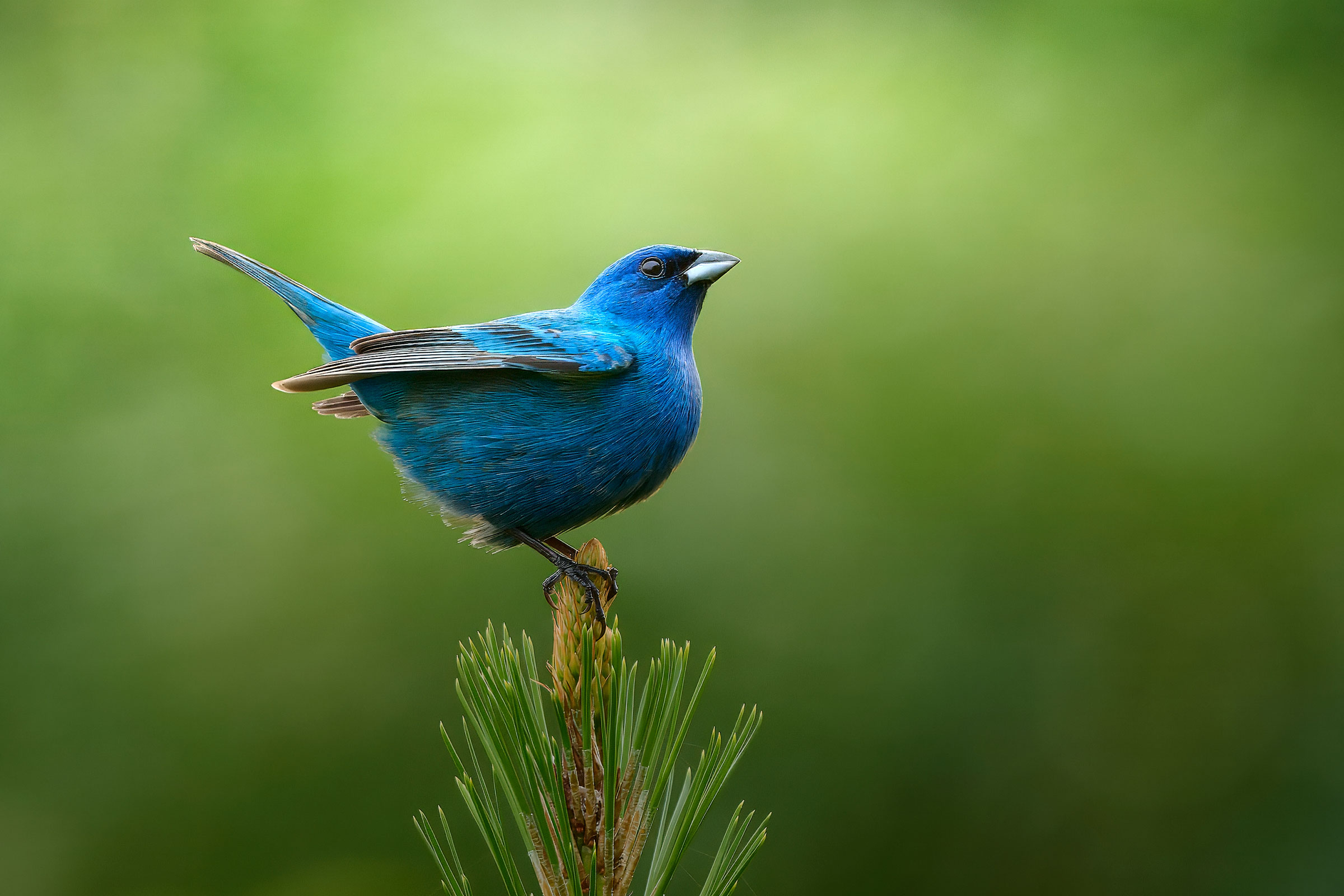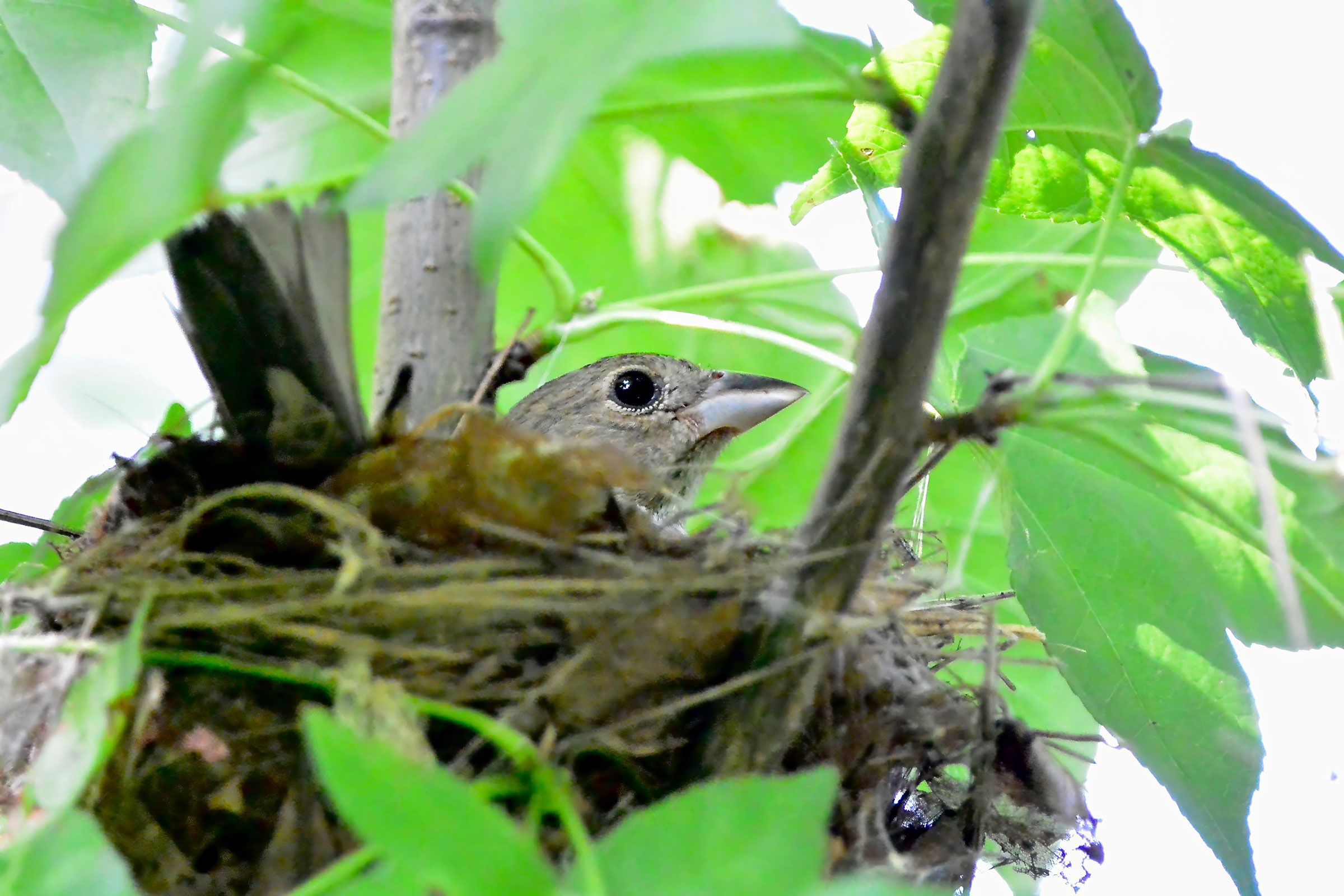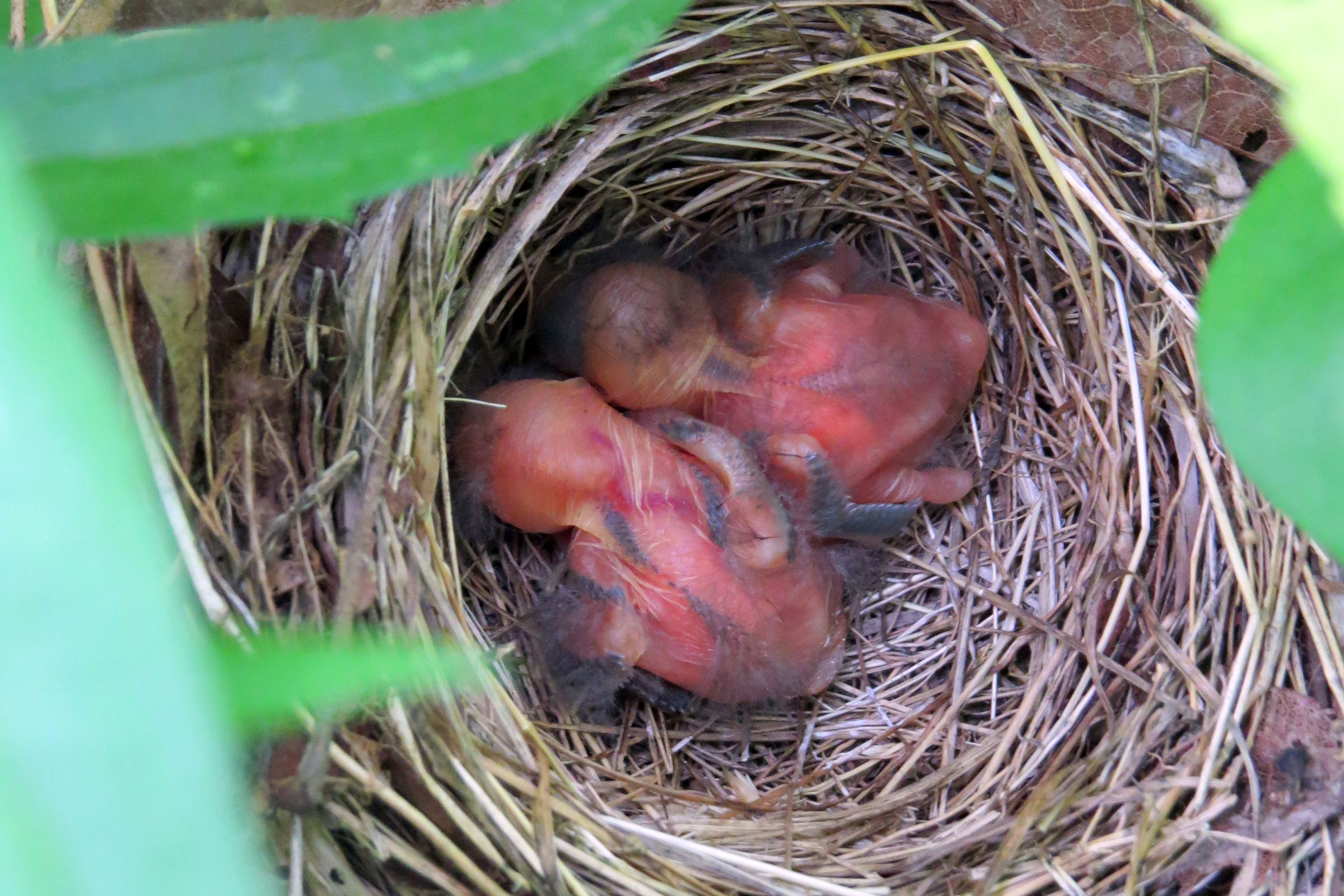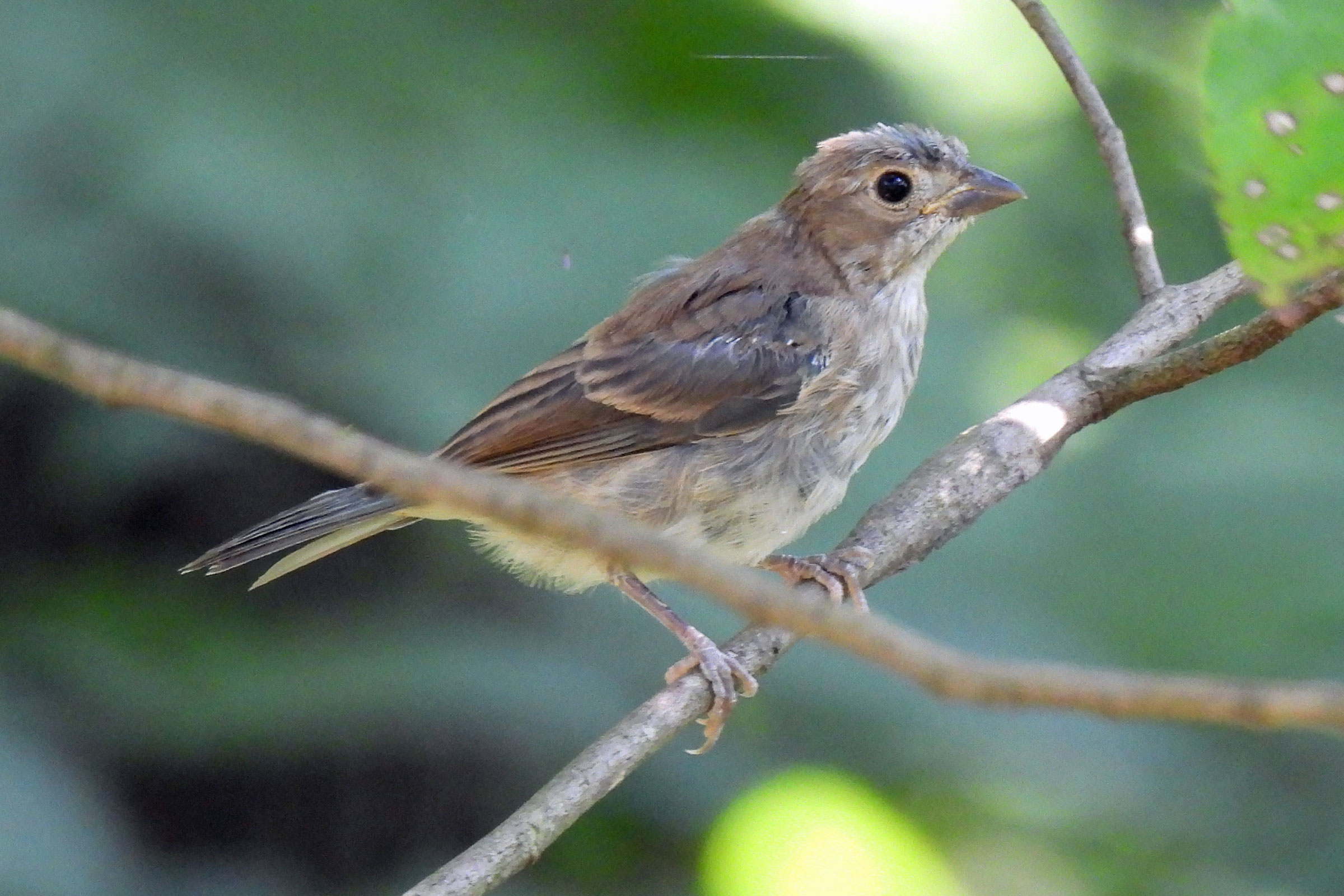Introduction
When it comes to Virginia’s “blue birds,” the male Indigo Bunting might be the most dazzling. His solid blue body contrasts with the female’s drab brown upperparts and lightly-streaked cream breast. This species is widespread across the state and can easily be heard singing from forest edges and brushy fields all summer long. (Payne 2020).
Breeding Distribution
Indigo Buntings breed throughout the state and are highly likely to occur in all regions. The only places they are less likely to occur are the most highly urbanized areas around Fairfax, Norfolk, and Richmond and some coastal areas (Figure 1). Reflecting a preference for woodlots set within open or scrubby areas, the species’ likelihood of occurring is slightly positively associated with forest cover and shrubland habitats as well as agricultural lands (hay/pasture if nesting in vegetated fencerows or in shrubby pastures).
Due to model limitations, Indigo Bunting’s distribution during the First Atlas and the change in distribution between Atlas periods could be modeled (see Interpreting Species Accounts). For more information on its distribution during the First Atlas, please see the Breeding Evidence section.

Figure 1: Indigo Bunting breeding distribution based on probability of occurrence (Second Atlas, 2016–2020). This map indicates the probability that this species will occur in an Atlas block (an approximately 10 mi2 [26 km2] survey unit) based on environmental (including habitat) factors and after adjusting for the probability of detection (variation in survey effort among blocks).
Breeding Evidence
Indigo Buntings were confirmed breeders in 626 blocks and 104 counties and found to be probable breeders in an additional 17 counties (Figure 2). Detection rates were highest near urban areas, likely reflecting volunteer effort more than Indigo Bunting abundance. They were also confirmed breeders throughout the state during the First Atlas (Figure 3).
The earliest confirmed breeding behavior was recorded in early May when adults were observed building. Throughout the breeding season, the primary behaviors recorded were observations of recently fledged young (May 19 – September 22), adults carrying food (May 19 – September 4), and adults feeding young (May 14 – September 21) (Figure 4).
For more general information on the breeding habits of this species, please refer to All About Birds.

Figure 2: Indigo Bunting breeding observations from the Second Atlas (2016–2020). The colored boxes illustrate Atlas blocks (approximately 10 mi2 [26 km2] survey units) where the species was detected. The colors show the highest breeding category recorded in a block. The numbers within the colors in the legend correspond to the number of blocks with that breeding evidence category.
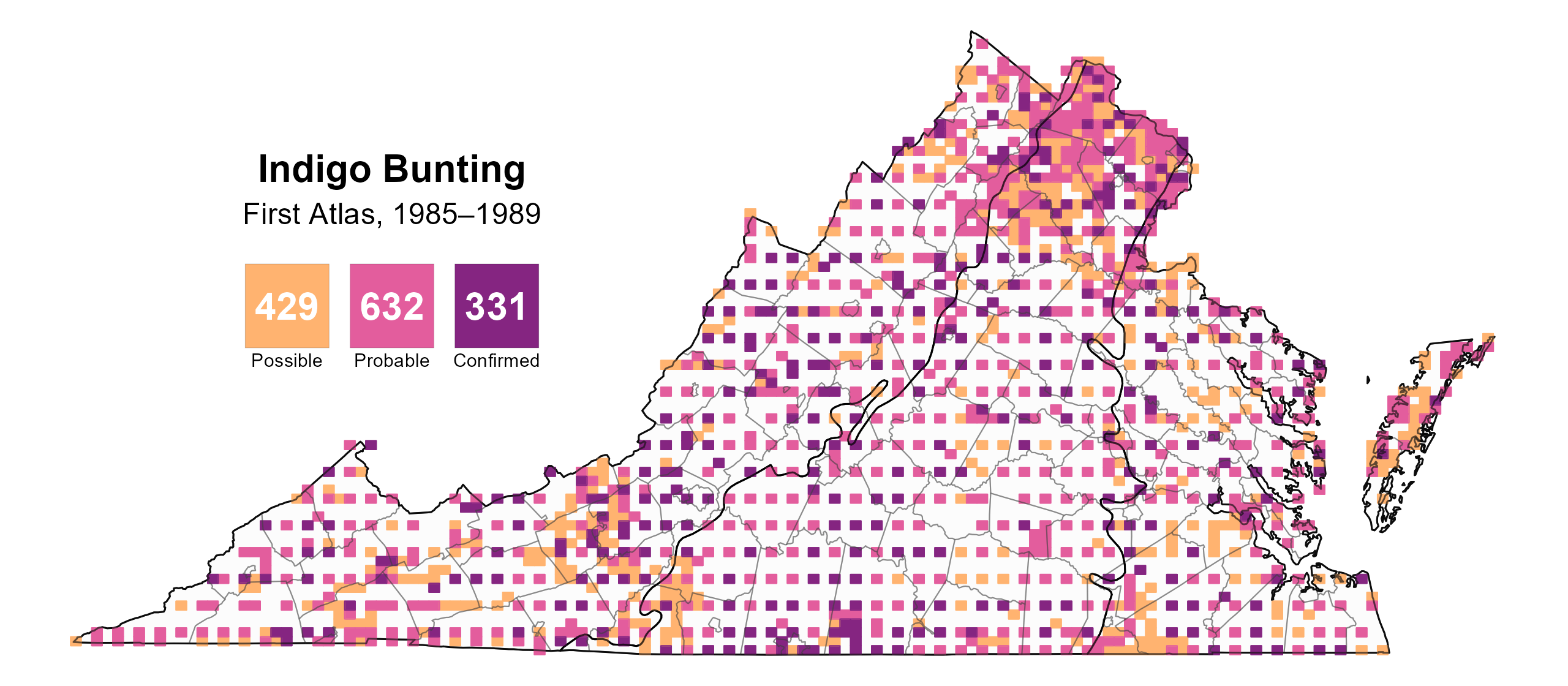
Figure 3: Indigo Bunting breeding observations from the First Atlas (1985–1989). The colored boxes illustrate Atlas blocks (approximately 10 mi2 [26 km2] survey units) where the species was detected. The colors show the highest breeding category recorded in a block. The numbers within the colors in the legend correspond to the number of blocks with that breeding evidence category.
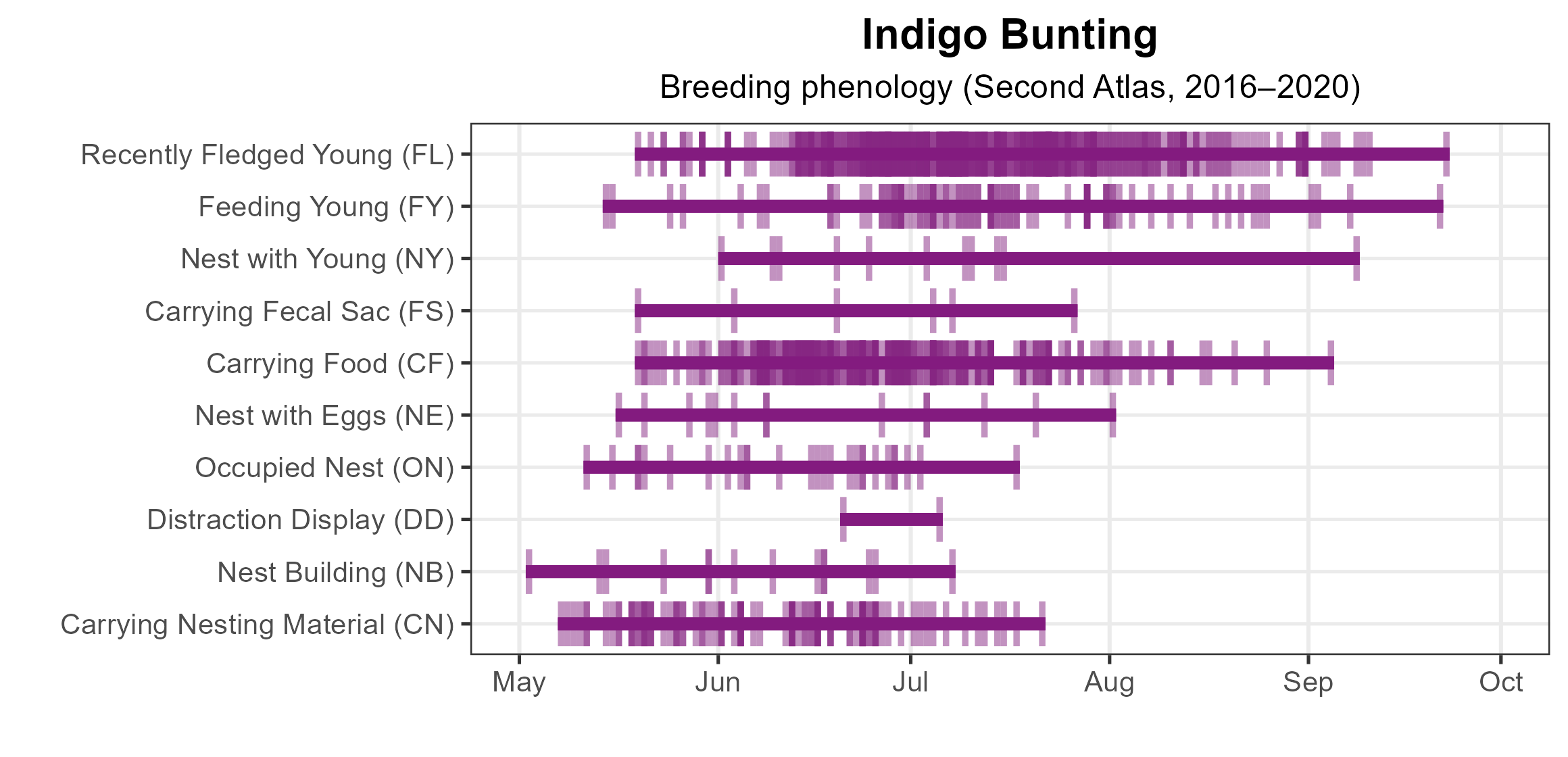
Figure 4: Indigo Bunting phenology: confirmed breeding codes. This graph shows a timeline of confirmed breeding behaviors. Tick marks represent individual observations of the behavior.
Population Status
Indigo Bunting relative abundance was estimated to be moderate to high throughout much of the state, except in the more urbanized areas, especially Hampton Roads-Virginia Beach, Northern Virginia, and Richmond; in some far western portions of the Mountains and Valleys region; and on the Eastern Shore (Figure 5).
The total estimated Indigo Bunting population in the state is approximately 1,850,000 detectable individuals (with a range between 1,645,000 and 2,081,000). This makes it the seventh most abundant breeding species in Virginia among the species for which abundance could be estimated. Based on the North American Breeding Bird Survey (BBS), the Indigo Bunting population declined by a significant 0.78% per year from 1966–2022 in Virginia (Hostetler et al. 2023; Figure 10). Between the First and Second Atlas, BBS data showed a significant decline of 1.55% per year from 1987–2018.

Figure 5: Indigo Bunting relative abundance (Second Atlas, 2016–2020). This map indicates the predicted abundance of this species at a 0.4 mi2 (1 km2) scale based on environmental (including habitat) factors. Abundance values are presented on a relative scale of low to high.
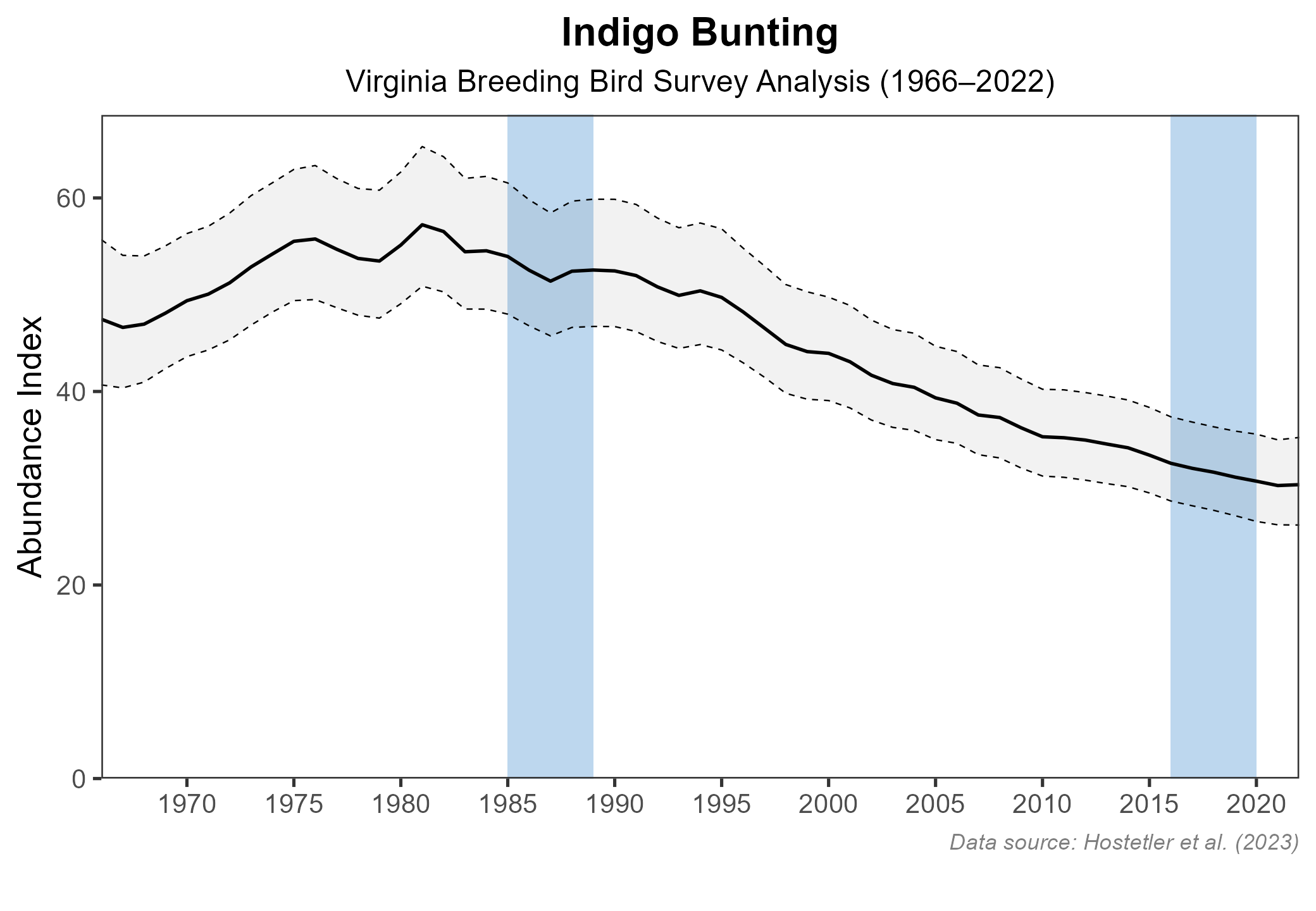
Figure 6: Indigo Bunting population trend for Virginia as estimated by the North American Breeding Bird Survey. The vertical axis shows species abundance; the horizontal axis shows the year. The solid line indicates the estimated population trend; there is a 97.5% probability that the true population trend falls between the dashed lines. The shaded bars indicate the First and Second Atlas periods.
Conservation
Although Indigo Buntings have experienced some decline in Virginia, they are considered abundant across the eastern U.S. There are no specific conservation projects underway in Virginia, but efforts that limit more intensive agriculture, mowing practices in fields and along roadways, and urbanization will also benefit the Indigo Bunting (Payne 2020).
Interactive Map
The interactive map contains up to six Atlas layers (probability of occurrence for the First and Second Atlases, change in probability of occurrence between Atlases, breeding evidence for the First and Second Atlases, and abundance for the Second Atlas) that can be viewed one at a time. To view an Atlas map layer, mouse over the layer box in the upper left. County lines and physiographic regional boundaries (Mountains and Valleys, Piedmont, and Coastal Plain) can be turned on and off by checking or unchecking the box below the layer box. Within the map window, users can hover on a block to see its value for each layer and pan and zoom to see roads, towns, and other features of interest that are visible beneath a selected layer.
View Interactive Map in Full Screen
References
Payne, R. B. (2020). Indigo Bunting (Passerina cyanea), version 1.0. In Birds of the World (A. F. Poole, Editor). Cornell Lab of Ornithology, Ithaca, NY, USA. https://doi.org/10.2173/bow.indbun.01.
Hostetler, J. A., J. R. Sauer, J. E. Hines, D. Ziolkowski, and M. Lutmerding (2023). The North American breeding bird survey, analysis results 1966–2022. U.S. Geological Survey, Laurel, MD, USA. https://doi.org/10.5066/P9SC7T11.

